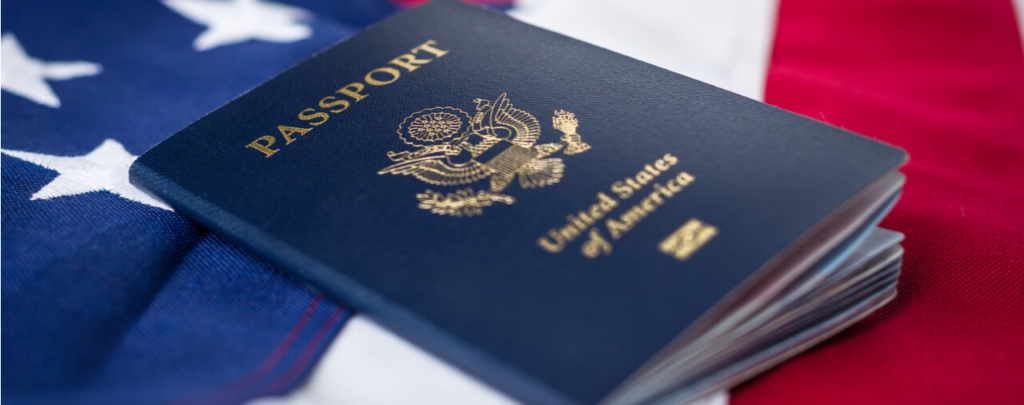- Introduction to Continuity of Residence for Naturalization
- Residency Rules and Exceptions
- Defining Continuous Residence
- Absences and Interruption of Continuous Residence
- Applying for Naturalization After Having Been Denied on Continuity of Residence Grounds
- Conclusion
Introduction to Continuity of Residence for Naturalization
In order to be eligible for naturalization, most applicants must generally have resided continuously in the United States for a period of five years prior to the naturalization application and subsequent to becoming a permanent resident unless he or she falls under certain exceptions. The applicant must also reside in the United States continuously from the date on which he or she applies for naturalization to the date on which he or she is naturalized. Certain absences from the United States during that five-year period may lead to a finding that the LPR’s period of continuous residence was “interrupted.” A finding of interruption of continuous residence would make the LPR ineligible for naturalization until he or she could satisfy all of the naturalization requirements.
It is important to distinguish the concept of “interruption” of continuous residence from “abandonment” of permanent residency. If an LPR’s departures are found to constitute the abandonment of permanent residency, he or she will not only be ineligible for naturalization but will also be subject to the loss of LPR status and removal from the United States. To learn about the concept of abandonment of permanent residency, please see our articles on the Department of State (DOS) guidelines [see article] and administrative and judicial precedent [see article] on the abandonment of permanent residency.
In this article, we will use the relevant statutes, regulations, agency guidance, and administrative and judicial precedent to explore issues regarding the interruption of permanent residency with regard to eligibility for naturalization.
To learn about situations in which an applicant may be considered to have maintained continuous residence even with an absence of one year or more, please see our full article [see article]. To learn about situations in which applicants are not subject to a full five-year continuous residence requirement, please see our full article [see article]. To learn about the physical presence requirement and what constitutes “physical presence,” please see our full article [see article].
Residency Rules and Exceptions
The rules for the residency requirement are found in section 316(a)(1) of the Immigration and Nationality Act (INA)
First, section 316(a)(1) requires that in order to be eligible for naturalization, the applicant must meet the following residency requirements:
Subsequent to being admitted as an LPR and immediately preceding the date of the application for naturalization, the applicant must have resided continuously in the United States for at least five years;
During the five year continuous residence period, the applicant must have been physically present in the United States for periods totaling at least one-half of that time;
The applicant must then reside continuously in the United States from the date of his or her application for naturalization to the date he or she is admitted for citizenship; and
The applicant must also have resided within the United States Citizenship and Immigration Services (USCIS) district from where he or she is applying for naturalization for at least three months before filing for naturalization.
For this article on interruption of permanent residency, we will focus on the continuous residence requirements. Although continuous residence and physical presence are related, they are distinct concepts. We discuss the physical presence requirement in our full article [see article] and we discuss that requirement as it was applied in situations where an applicant for naturalization was absent for one year or more during the statutory continuous residence and physical presence period for naturalization [see article]. We will not address the three-month residence requirement in the USCIS district from which a naturalization application is filed in this article.
The USCIS Policy Manual goes into detail on continuous residence in 12-USCIS-PM D.2 [link] and D.3 [link].
Before discussing further, it is worth noting that noncitizen nationals who are seeking naturalization are not subject to the same requirements. Noncitizen nationals need not be admitted for LPR status to apply for naturalization and may meet the five year residence requirement by residing in American Samoa or Swains Island. A noncitizen national may apply for naturalization if he or she becomes a resident of any state and meets the three-month residence requirement in the USCIS district from which he or she is applying for naturalization. Other requirements for naturalization apply to noncitizen nationals. To learn more, please see our full article [see article].
Certain members of the armed forces are exempt from having to be LPRs in order to obtain naturalization. These are persons eligible for naturalization under section 329 of the INA.
There are several cases where an applicant for naturalization is subject to a modified continuous residence/physical presence requirement or is exempt entirely. These include certain petitions by members of the U.S. armed forces and certain cases involving the spouse, parent(s), or child(ren) of U.S. citizens. To learn more about these special cases, please see our full article [see article].
Defining Continuous Residence
12 USCIS-PM D.3 explains that, in accordance with 8 C.F.R. 316.5(a), an alien must maintain a permanent dwelling place in the United States to satisfy the continuous residence requirement. This requirement necessarily excludes commuter LPRs from satisfying the continuous residence requirement for naturalization so long as they reside in Canada or Mexico [see article]. Quoting from the regulation, the Policy Manual explains that the “residence in question” must be “the same as the alien’s domicile, or principal actual dwelling place, without regard to the alien’s intent.” Furthermore, the time measured for the alien maintaining a residence in the United States starts with the “moment the alien first establishes residence in that location.” As we will discuss in our section on exceptions, there are certain classes of naturalization applicants who are subject to shorter continuous residence requirements or who are exempt altogether from the requirement [see section].
Absences and Interruption of Continuous Residence
Section 316(b) of the INA discusses situations in which absences from the United States may lead to an applicant being unable to meet the five-year continuous residence requirement for naturalization. The statute specifically addresses continuous absences of more than six months but less than one year and absences of one year or more.
Multiple Absences of Less than Six Months
Although not addressed directly by statute, 12-USCIS-PM D.3 explains that an applicant with multiple absences of less than six months may be found to be unable to meet the five-year continuous residence requirement. Citing to 8 C.F.R. 316.5(a), the PM explains that multiple such absences may call into question whether the applicant’s “principal actual dwelling place” is or was in the United States.
Absence of More than Six Months But Less than One Year
Under section 316(b) of the INA, if the applicant was absent from the United States for a continuous period of more than six months but less than one year during the period for which continuous residence in the United States was required, continuous residence shall be considered broken unless he or she can establish non-abandonment of residence in the United States during that period. This also includes any individual absences that occur after the applicant files for naturalization and before he or she is granted citizenship.
12-USCIS-PM D.3 explains that if the applicant has a continuous absence of more than six months but less than one year, there shall be a presumption that his or her permanent residence was interrupted. The PM explains that the intent of the alien is not relevant to the presumption that such an absence constitutes the interruption of permanent residency.
The PM explains that it is possible for a naturalization applicant to overcome the presumption of the interruption of permanent residency if he or she has an absence of more than six months but less than one year. Under 8 C.F.R. 316.5(c)(1)(i), evidence to overcome the presumption of interruption may include, but is not limited to:
A. That the applicant did not terminate his or her employment in the United States;
B. That the applicant’s immediate family remained in the United States;
C. That the applicant retained full access to his or her place of residence in the United States;
D. That the applicant did not obtain employment while abroad.
Finally, it is important to note again that this is a distinct concept from “abandonment” of LPR status. For example, it is fully possible that an applicant who fails to overcome the burden of interruption of permanent residency may not be charged with having abandoned his or her LPR status, or that the applicant may demonstrate that he or she did not abandon LPR status if charged with abandonment.
In Li v. Chertoff, 490 F.Supp.2d 130 (D. Mass. 2007) [PDF version], a federal district court held that an LPR who had filed for naturalization, and who then departed the United States for more than six months but less than one year to study abroad in Canada, had maintained the continuity of her residence. The District Court was clear that a determination of whether an interruption of permanent residence occurs in a case where an applicant for naturalization goes to study in Canada will be fact-specific and depend on an analysis under the factors listed in 8 C.F.R. 316.5(c)(1)(i).
In Alvear v. Kirk, 87 F.Supp.2d 1241 (D.N.M. 2000) [PDF version], a federal district court held that a naturalization applicant failed to meet the continuous residence requirement where he had been absent for more than six months but less than one year and where he failed to present evidence that he had maintained a place of general abode in the United States throughout the five-year period. This is a significant decision because it focuses on the point that, where an applicant is abroad for more than six months but less than one year, the burden is on the applicant to demonstrate that he or she maintained the continuity of residence for the statutory period.
Absence of One Year or More
If the applicant was absent from the United States for one year or more during the period for which continuous residence in the United States was required, that shall constitute an interruption of the LPRs continuous residence for naturalization purposes. While it is possible for an LPR who is absent from the United States for at least one year continuously to demonstrate that he or she did not abandon his or her LPR status, there are only a few specifically defined cases in which an absence from the United States of one year or more continuously does not constitute an interruption of permanent residency for naturalization purposes. To learn about the situations in which an LPR can work abroad for one year or more and maintain the continuity of his or her residence, please see our full article [see article].
In Gildernew v. Quarantillo, 594 F.3d 131 (2d Cir, 2010) [PDF version], the Second Circuit held that an applicant for naturalization who had been absent for more than one year because he was erroneously placed on the “no-fly” list could be denied naturalization. In this case, the applicant argued that because his absence occurred subsequent to his filing for naturalization, the one-year bar should not apply. However, the Second Circuit held that the one-year bar applies both to the five years immediately preceding a naturalization application and the time between the filing of the application and a grant of citizenship.
Applying for Naturalization After Having Been Denied on Continuity of Residence Grounds
12-USCIS-PM D.3 explains that if an applicant for naturalization who was required to satisfy the five year continuous residence requirement is denied for having had an absence of one year or longer, he or she may apply for naturalization four years and one day after returning to the United States to resume permanent residence. Applicants who are subject to a three year continuous residence requirement (certain immediate relatives of U.S. citizens) may apply two years and one day after returning to the United States to resume permanent residence. These rules are derived from regulations found in 8 C.F.R. 316.5(c)(1)(ii).
Conclusion
An LPR who intends to seek naturalization must make sure that he or she is aware of the applicable continuous residence and physical presence requirements for naturalization. If the LPR is considering engaging in employment abroad or taking prolonged absences from the United States, he or she should consult with an experienced immigration attorney for guidance on the effect that such actions may have on his or her eligibility for naturalization. Applicants for naturalization should be aware that, unless exceptions apply, an absence of more than six months but less than one year will raise a presumption that the continuity of residence was interrupted. An applicant for naturalization should work with an experienced immigration attorney throughout the naturalization process.
Please read our overview of applying for naturalization in order to learn more about the general process [see article].
Resources and Materials:
Kurzban, Ira J. Kurzban’s Immigration Law Sourcebook: A Comprehensive Outline and Reference Tool. 14th ed. Washington D.C.: AILA Publications, 2014. 1796-98, Print. Treatises & Primers.





